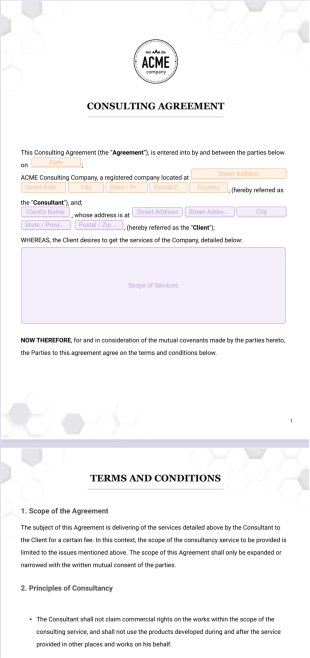Purchase Agreement FAQs
1) What are the different types of purchase agreements?
Depending on the size and nature of your purchase, there are a number of different purchase agreements, including
- Standard purchase agreements: The simplest type of purchase agreements, these are commonly used for one-time purchases.
- Planned purchase agreements: A business typically uses these orders when establishing a relationship with a single supplier for future purchases.
- Blanket purchase agreements: Also known as standing purchase agreements, these orders are used to lock in pricing before a specific order is made.
- Contract purchase agreements: These establish a long-term purchase agreement, with all necessary details laid out in full.
Each type of purchase agreement also has a purchase order counterpart. However, these agreements are for finalizing a sales relationship rather than initiating a sale.
2) How does a purchase agreement work?
When two parties sign a purchase agreement, they’re legally bound to uphold the terms laid out in the contract. This is why purchase agreements are so important — they protect the best interests of both parties.
Suppliers must provide goods at the price and timeline agreed upon at the time of signing, just as buyers are required to provide compensation for these products according to the contract’s terms.
If there are any issues, such as damaged goods, delays, or non-payment, each party has the right to take legal action to resolve the dispute.
3) What information should be included in a purchase agreement?
The details of a purchase agreement vary depending on the exact nature of the agreement. However, there are some overarching fields that an agreement should include:
- Buyer information
- Seller information
- Agreement date
- Description of purchase
- Payment terms
- Tax information
- Delivery details
- Inspection and acceptance terms
- Warranties and indemnification
- Dispute resolution clause
- Signatures of both parties and dates
Ensuring that your purchase agreement has the above information will help protect your business’s best interests and reduce the potential for any misunderstandings.
4) Who needs a purchase agreement?
While purchase agreements are useful for any type of transaction, they’re typically necessary for large purchases. Businesses that move large volumes of product need legal protection in case something goes wrong. This is what makes purchase agreements and purchase orders so commonplace.
Some common users of purchase agreements include
- Real estate agents
- Corporations
- Retailers
- Entrepreneurs
- Wholesalers
- Manufacturers
Businesses that choose to create purchase agreements protect themselves from misunderstandings, malicious partners, and just the headache of negotiation terms one transaction at a time. Having a set agreement ensures both parties are on the same page and keeps everyone’s best interests in mind.
5) What are the typical use cases of a purchase agreement?
Purchase agreements are for finalizing the details of an upcoming purchase. They lay out the financials, timeline, delivery, and legal terms and conditions of each purchase to ensure both parties are in agreement. By signing an agreement, both the buyer and seller agree to uphold their end of the deal and to legal ramifications as a deterrent against wrongful behavior.
Since purchase agreements are typically for larger orders, some common use cases include
- Real estate
- Large volume orders
- Used machinery or equipment
- Motor vehicles sales
- Repeat orders
In any of these cases, a purchase agreement will clearly outline the terms of sale and finalize these details before the transaction is made.
6) How do I create a purchase agreement?
Depending on the type of sale, your purchase agreement may need to be extremely comprehensive. Different industries have different requirements, which means your form needs to fit your specific needs.
Get started quickly by using this purchase agreement template. Just click Use Template and then customize it to your needs by editing the text, adding fields, and changing the design however you see fit. When you’re ready to share the contract, just click the Send tab to email it directly from the Jotform platform.
Using a template saves you time in designing, structuring, and organizing your agreement, so you can get right to adding the specific details you need to include.
7) How do I customize a purchase agreement?
You can customize this event decorator contract template with Jotform Sign Builder. Use the Add Fields menu on the left to drag and drop text blocks, signature fields, date fields, and more. Click Edit template on the right to make changes to the text and overall design of your contract. Add your logo, customize fonts, change the color scheme, and more.
You can easily update the design, edit text, and add new fields to this template with the Jotform Sign Builder. If you already have a purchase agreement template that you’d like to use, you can also upload it as a PDF to Jotform and customize it with Jotform’s PDF Editor.






